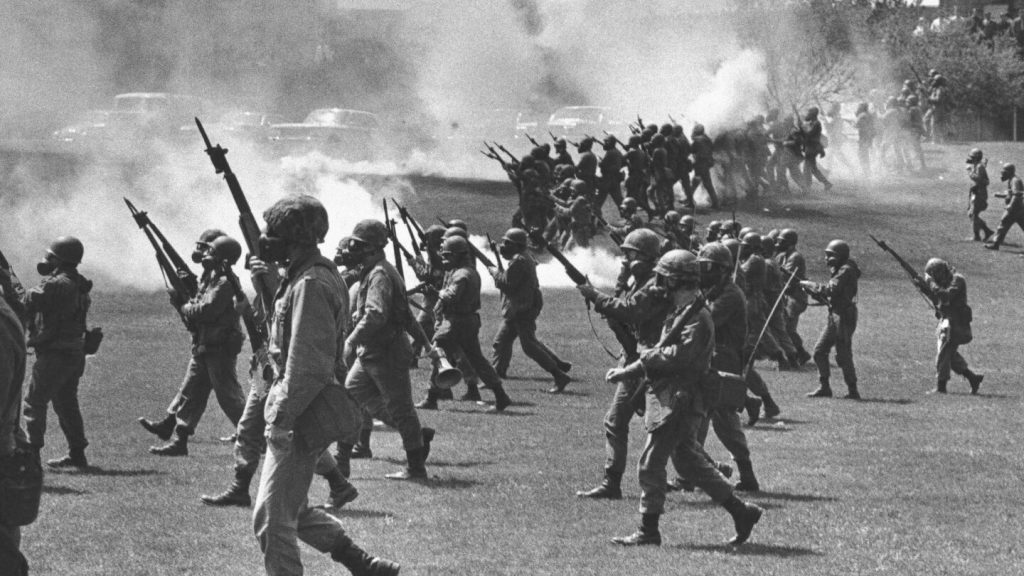On May 4, 1970, the Ohio National Guard fired upon unarmed college students during a war protest at Kent State University, resulting in the death of four students and injury of nine others. The protest was against the U.S. bombing of neutral Cambodia during the Vietnam War, and not all of those hurt or killed were directly involved in the demonstration. The events, known as the May 4 massacre, were a significant moment for a nation already divided over the prolonged war in Vietnam, leading to a strike of 4 million students across the U.S. The shootings played a critical role in turning public opinion against the conflicts in Southeast Asia.
In the aftermath of the shootings, confusion and chaos reigned as reporters and authorities sought to determine the circumstances of the tragedy. Various theories emerged, with some claiming that Guard members shot after spotting a sniper. However, these claims were disputed by the Ohio Highway Patrol, which did not have any record of a sniper sighting on the day of the incident. Further investigations were launched by the Justice Department and National Guard to uncover the truth behind the shooting and the events that led to the deaths of the four students.
The students who lost their lives in the tragic incident were identified as Allison Krause, Sandy Lee Scheuer, Jeffrey G. Miller, and William K. Schroeder. Autopsies revealed that all four victims had been shot from left to right, with fatal single bullet wounds. Amidst the condemnation and outrage following the shootings, President Nixon deplored the campus deaths and emphasized the need for peaceful dissent without resorting to violence. The incident prompted a swift evacuation of the campus and the city of Kent, with classes being suspended indefinitely and a state of emergency declared.
Investigations into the shootings were initiated by both state and federal authorities, with the Ohio National Guard claiming that guardsmen were forced to defend themselves against a small-caliber weapon being fired at them by demonstrators. Eyewitness accounts and conflicting reports added to the confusion surrounding the tragedy, with various explanations given for the violent escalation of events. As the nation grappled with the aftermath of the Kent State shootings, calls for an immediate investigation and steps to prevent such tragic campus violence reverberated across the country.
The Kent State shootings marked a turning point in the anti-war movement, galvanizing public opinion against U.S. involvement in Vietnam and prompting a wave of protests and demonstrations across the nation. The incident underscored the tensions and divisions that existed within American society during the turbulent 1960s and early 1970s. As the wounded students struggled to recover and the families of the victims mourned their loss, questions loomed about the circumstances that led to the tragic events of May 4, 1970. The legacy of the Kent State massacre continues to serve as a somber reminder of the consequences of dissent and the need for peaceful resolution of conflicts.


